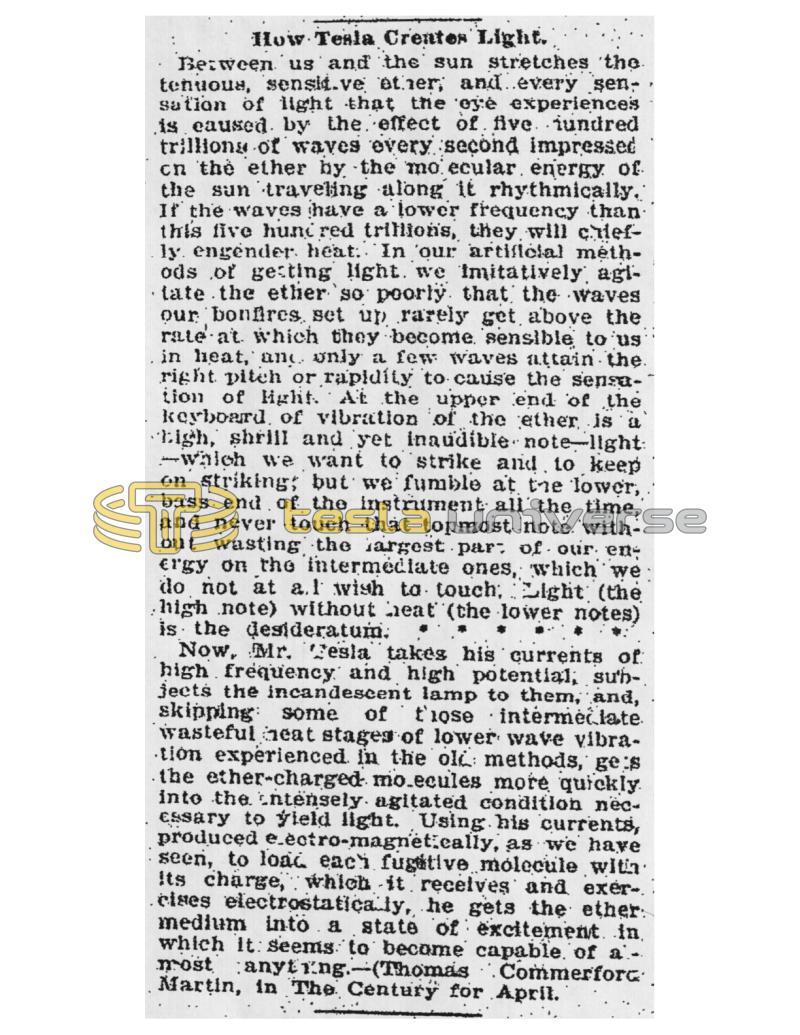
Nikola Tesla Articles
How Tesla Creates Light
Between us and the sun stretches the tenuous, sensitive ether, and every sensation of light that the eye experiences is caused by the effect of five hundred trillions of waves every second impressed on the ether by the molecular energy of the sun traveling along it rhythmically. If the waves have a lower frequency than this five hundred trillions, they will chiefly engender heat. In our artificial methods of getting light, we imitatively agitate the ether so poorly that the waves our bonfires set up rarely get above the rate at which they become sensible to us in heat, and only a few waves attain the right pitch or rapidity to cause the sensation of light. At the upper end of the keyboard of vibration of the ether is a high, shrill and yet inaudible note - light - which we want to strike and to keep on striking; but we fumble at the lower, bass end of the instrument all the time, and never touch that topmost note without wasting the largest part of our energy on the intermediate ones, which we do not at all wish to touch. Light (the high note) without heat (the lower notes) is the desideratum.
Now, Mr. Tesla takes his currents of high frequency and high potential, subjects the incandescent lamp to them, and, skipping some of those intermediate wasteful heat stages of lower wave vibration experienced in the old methods, gets the ether-charged molecules more quickly into the intensely agitated condition necessary to yield light. Using his currents, produced electro-magnetically, as we have seen, to load each fugitive molecule with its charge, which it receives and exercises electrostatically, he gets the ether medium into a state of excitement in which it seems to become capable of almost anything. - (Thomas Commerford Martin, in The Century for April.)
